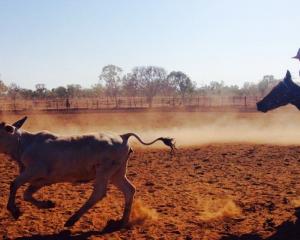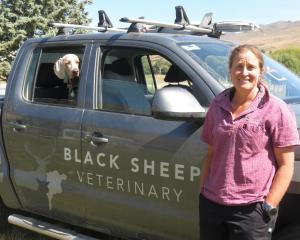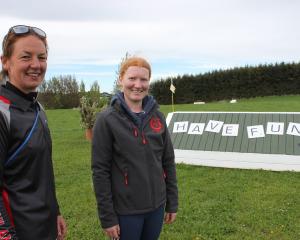Central Otago Forest & Bird members are proud of a two-year labour of love at Lake Hawea Station to offset their carbon emissions. Marjorie Cook reports.
It's hard to imagine a conservation group dedicated to restoring forests would be too worried about creating carbon emissions.
But it turns out, after 24 years of regularly driving the 120km round trip between Wanaka and Makarora to trap possums, stoats, cats and rats, Central Otago Forest & Bird members were really worried about their carbon footprint.
So they teamed up with Toitu Envirocare’s first carbon-zero certified farm, Lake Hawea Station, to give even more back to the planet.
Two of the brigade are Evan Alty, a retired lawyer and chairman of Central Otago Forest and Bird, and fellow committee member and retired geologist Mo Turnbull.
Both live at Lake Hawea and belong to a team of 50 that has been nurturing hundreds of new plants on a 2ha privately owned block of kanuka beside the entrance to the Department of Conservation’s Grandview Mountain Track.
An easement protects the native trees.

‘‘This is our carbon offsetting. Forest & Bird has had a major project at Makarora, killing predators since 1997. It is a very long term project and at the moment there are more than 50 volunteers regularly going to Makarora to clear traps. Every year we put out about six to eight tonnes of carbon dioxide, which is quite a lot,’’ Mr Alty said.
Lake Hawea Station owner Geoff Ross says the project is a good example of private-public collaboration between farmers and environmentalists.
‘‘I think Doc have got a huge territory here and a huge number of responsibilities and it is something they just haven’t been able to take on . . . These public access points should not just be a point to a farm, they should be beautiful examples of biodiversity. They don’t have the resource to do that. With Forest & Bird we can build the biodiversity there and have a great story to tell.
‘‘. . . these islands [of forest] then grow and the bird life will transplant to other parts, like that lovely beech forest further up the valley,’’ Mr Ross said.
He said working with Forest & Bird was sparked by his son Finn, a PhD student at Deakin University, Melbourne, studying carbon sequestration.
‘‘It was Finn who first came in contact with Mo,’’ he said. ‘‘We had realised long before we got to Lake Hawea Station the challenge the country and planet have got in front of us. In Forest & Bird we really saw people who could help us rebuild biodiversity values here.
‘‘We have the last remaining populations of the Grand and Otago Skinks, our country’s biggest lizards, one of two stands in the wild of cypress hebe. We have the karearea native falcon, the tree daisy and New Zealand’s second rarest fish [Clutha Flathead Galaxid]. . . The responsibility we felt when we got here and realised that is huge. So support from organisations like Forest & Bird is hugely gratifying.’’

Mr Turnbull agrees farmers and conservationists can cooperate for good outcomes.
But he is brutally honest: the 2ha forest will not create a sanctuary, though he hopes in time species other than quail and white butterfly will not be the first thing you see there.
Nor will it halt climate change.
‘‘It will not change the world, but it is a start. In about 30 years’ time, there will be a forest in there . . . We are all on the same side, all on the same planet and we are all cooking,’’ he said.
When Mr Turnbull put the first fence in around the block, he smashed his crowbar through a water pipe from Grandview Creek .
The former station owners, the Rowley family, ribbed him. For all his years of high country experience, he should have known it was there.
The Urquhart family, who live on Nook Rd, helped repair the pipe for the price of some beers.
The ‘‘extremely embarrassing’’ accident ended well because Mr Turnbull put hoses in and got water to the site, just before the first two lots of trees were planted.
Mr Alty was very grateful for that as some of the volunteers are not getting younger and carrying buckets of water can be a tough ask — though Mr Turnbull said he had still carried countless buckets to the top of the section.
‘‘We don’t want to count buckets. You wouldn’t want to come up here if you knew how many there were,’’ Mr Turnbull said.

Mr Alty said a Mt Aspiring College student helped immensely when volunteered to cut some steps into the slope, ‘‘looking after us old folk’’.
Another big job is to dig holes.
‘‘You need a good strong back, you need a good spade and a crowbar handy,’’ Mr Alty said.
‘‘With those components you can dig a hole that’s about a foot round and a foot deep and once you have crumbed up the soil, pour it back in, punch it down all around and clear the vegetation in the immediate vicinity.’’
All the plants are ‘‘ecologically pure,’’ sourced from local seeds grown by Te Kakano Trust Matukituki Natives.
Species include matai, totara, kahikatea, pittosporum, cabbage trees, oleria and beech.
The casualty rate has been about 10%.
Species advice was sought from Pukerau nurseryman Arne Cleland, former Doc employee Geoff Rogers, and Wanaka landscape architect Anne Steven who manages the programme.
The Grandview catchment soil is good for growing and the north-facing site is hot.
‘‘If you look around you will see all of the trees have rabbit protectors. Rabbits along with drought is the biggest problem we have up here. We are pretty lucky. Lake Hawea Station keep on top of their rabbits pretty well so we have had very little trouble with rabbits,’’ Mr Turnbull said.
Mr Alty worked as a Doc lawyer on mining permit cases and recalled when environmental assessments were quite minimal.
At Lake Hawea Station bird diversity had noticeably increased since planting began, to include fantail, tomtit, silvereye and rifleman. Mr Turnbull agreed he was seeing a lot more native birds.
‘‘We had two or three fantails, tomtits when I was up here two or three weeks ago and grey warbler.

‘‘Some of the native birds are a spill over from the Grandview Creek Conservation Area.
‘‘We are getting some of those birds down here, which is very good, because biodiversity is a very important aspect of everything Forest and Bird is doing,’’ he said.
Mr Ross believes more birds arrived, not just because of this project, but because of pest control and another 15,000 trees on Lake Hawea Station since 2018.
‘‘When we got here we had bellbirds but no sightings of tui or kereru. In the last two years we have seen both kereru and tui.
‘‘The other thing we have just started is a bird song monitor called Cacophony. It measures bird sound. If you come back to me in a year, I will be able to give you something more definitive . . . ,’’ Mr Ross said.
Mr Ross said the farm’s relationship with Central Otago Forest & Bird was important.
‘‘The key thing we recognise is that we can’t do it alone. There are huge capital costs for farms to invest in planting and protection of biodiversity.
‘‘To have a partner, a financial resource and a time and work resource, to help us build up and increase the biodiversity is a very valued approach . . . I think it’s a really good example of how public and private organisations need to work together to tackle some of these issues. And Mo is a real character and brings real energy to this whole project,’’ Mr Ross said.
The admiration is mutual.
‘‘I would have to say they would have to be some of the best people on high country farms I have ever worked with. . . They are on to it. Lake Hawea Station is now registered as carbon neutral and there aren’t many properties around that have taken that step, so more more power to the Lake Hawea Station people,’’ Mr Turnbull said.
- by Marjorie Cook














